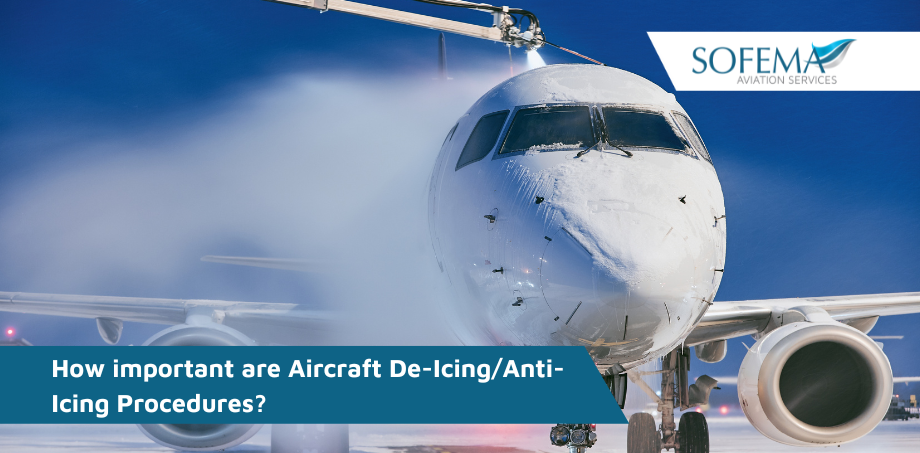Webinar Course Notification – Aircraft De-Icing /Anti-Icing
Courses Running in September 2022 – Book your place now!
- De-icing Procedures: Aircraft Ground De/Anti-Icing – 1 Day
- De-icing Quality Assurance: Aircraft De-icing / Anti-icing Quality Assurance Techniques – 1 Day
Sofema Aviation Services (SAS) www.sassofia.com introduces the key elements of effective De-Icing /Anti-Icing Procedures
Introduction
Determining the need for De/Anti-Icing
- The need for De/Anti-Icing is usually determined well beforehand by the trained and qualified ground crew or flight crew.
Certain aspects must be considered, such as:
- What are the A/C specific requirements and precautions,
- Is the De-Icing operation performed at the gate or remote, can the aircraft start the engines and taxi to a remote de-icing fully contaminated,
- Who makes the request for the De-Icing,
- Verification of proper procedure with all parties involved (ground crew/flight crew/De-Icing), should air-blower/brushes be used beforehand, etc.
- The contamination check shall cover all critical parts of the aircraft and shall be performed from points offering sufficient visibility of these parts (e.g. from the de-icing vehicle itself or any other suitable piece of equipment).
- Any contamination found, except frost allowed in certain areas, shall be removed by a de-icing treatment followed by an anti-icing treatment if required.
Manual De-Icing Considerations
Some inspected areas can be cleaned manually during the inspection and a de-icing procedure is not necessary. (Such procedure must be confirmed with the flight crew.)
The captain has the final authority over the procedure but the safer option should always be considered, whether it is the opinion of the flight crew or ground crew (company and A/C limits to be noted). There are some areas to include in the inspection while waiting for instructions from the flight crew.
Areas to check to include:
- Wings (upper and lower)
- Vertical and horizontal tail surfaces (upper and lower horizontal surfaces)
- Fuselage
- Engine inlets and fan blades (front and back side of fan blades)
- Control surfaces and gaps
- Pitot heads and static ports
- Landing gear and landing gear doors
- Antennas and sensors
- All other aerodynamic surfaces
- Propellers
Clean Aircraft Concept Consideration
A clean aircraft is considered to be either totally clean or cleaned and protected with De/Anti-Icing fluids that still protect the surface and are able to perform aerodynamically correct.
- Contaminated fluid on the surface must not be misunderstood as a clean aircraft – This contamination must be removed.
- Under no circumstances shall an aircraft that has been anti-iced received a further coating of anti-icing fluid directly on top of the contaminated film.
- If additional treatment is required before the flight, a complete De/Anti-Icing shall be performed. Ensure that any residues from previous treatment are flushed off. Anti-Icing only is not permitted.
Next Steps
Follow this link to our Library to find & Download related documents for Free.
Please see www.sassofia.com or email us at team@sassofia.com – Secure your saving now with Early Bird & Multi Attendance/Multi Delegate discounts.
Tags:
Flight Crew, multi delegate discount, Early Bird Discount, SAS blogs, SAS training, Webinar training, Aircraft De-icing, Aircraft Anti-icing, Quality Assurance Techniques, Aircraft Ground De/Anti-Icing, Webinar Courses, De-icing Procedures, De-icing Quality Assurance




